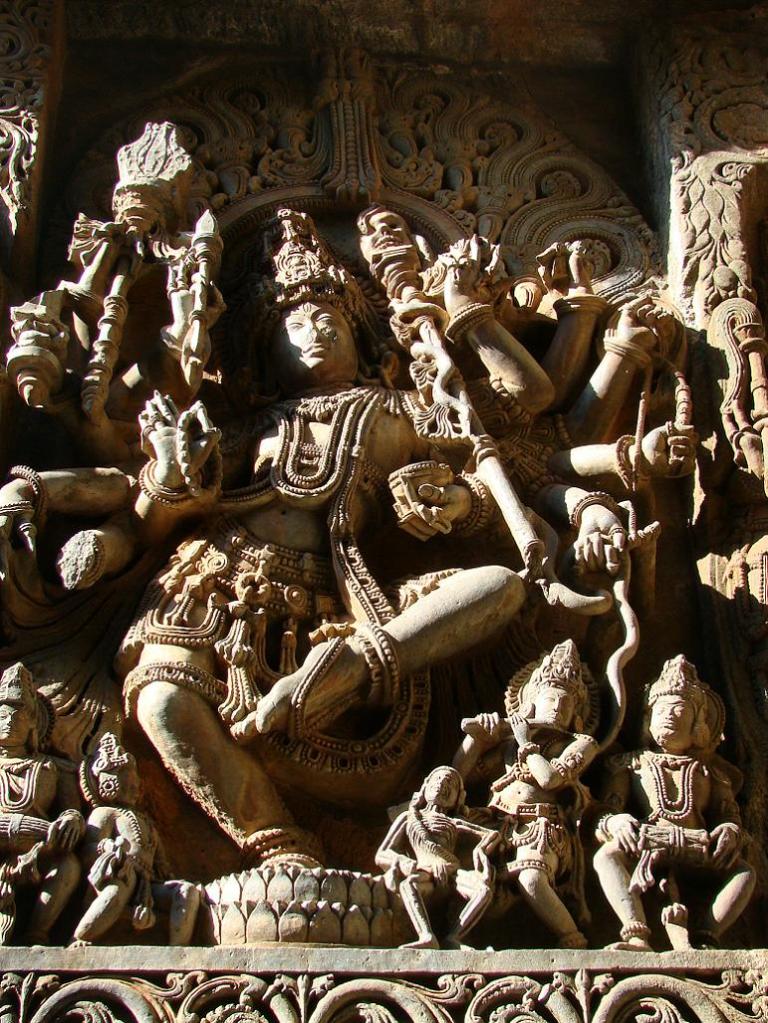Historians and experts say that Halebidu (then Dorasamudra, the capital of Hoysala kigdom) came into existence around the middle years of 11th century AD and its existence has a link with the construction of the tank, on the bank of which the Hoysalesvara/Kedaresvara temple complex was built about seventy or eighty years latter.
It is said that the outer wall relief sculpture schema is a lot different in Hoysalesvara temple and even stands out as unique within the Hoysala school of temple architecture. The outer wall relief sculpture of Hoysalesvara temple appears boradly divided into three layers or sections and the lower section itself contains eight regular rows of relief sculpture of a variety of animals, i.e., elephants, horses, lions, crocodiles etc., and of birds. Above this is the layeror section which is dedicated to exhibiting the pantheon of Hindu gods and goddesses with an amazingly acurate features decorated with an astounding quantity and quality of ornamentation.
The above photograph shows ‘Parama Shiva’ in dancing posture. I don’t think it would be possible to imagine a more accurate picture of ‘Parama Shiva’ in dancing posture than this one even in a drawing expertly done on paper.

This is a remarkable piece of India’s rich culture. Great post….